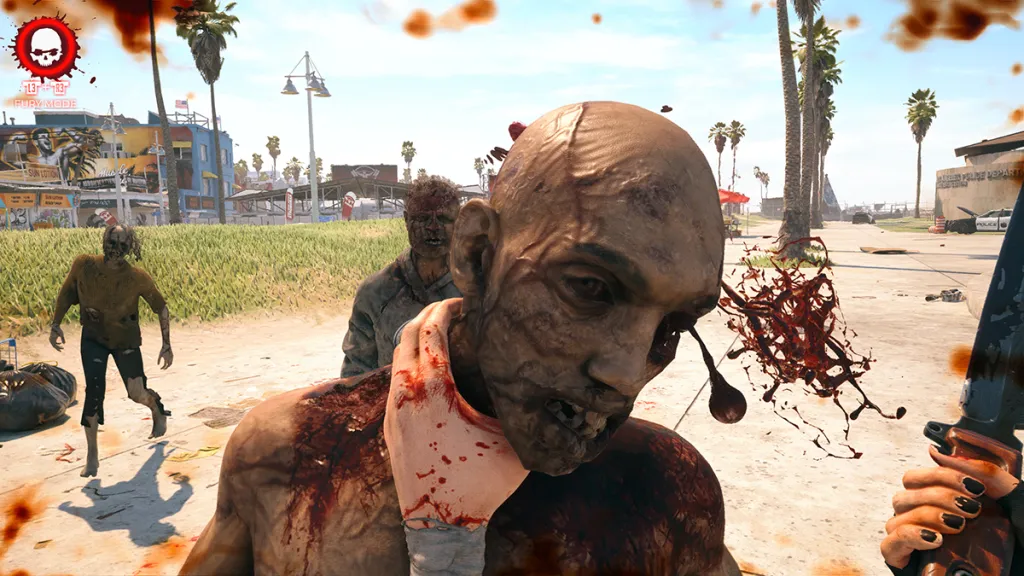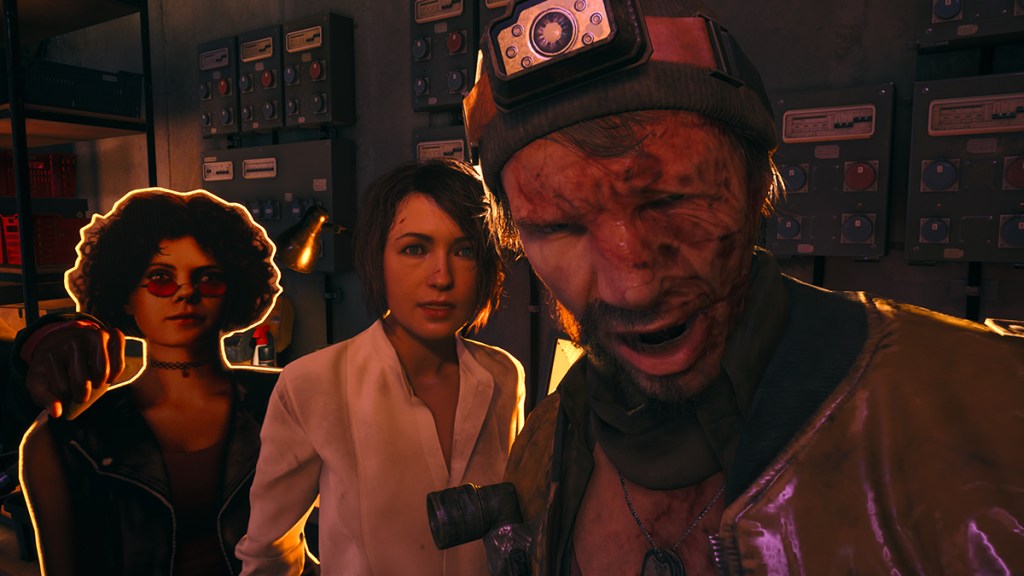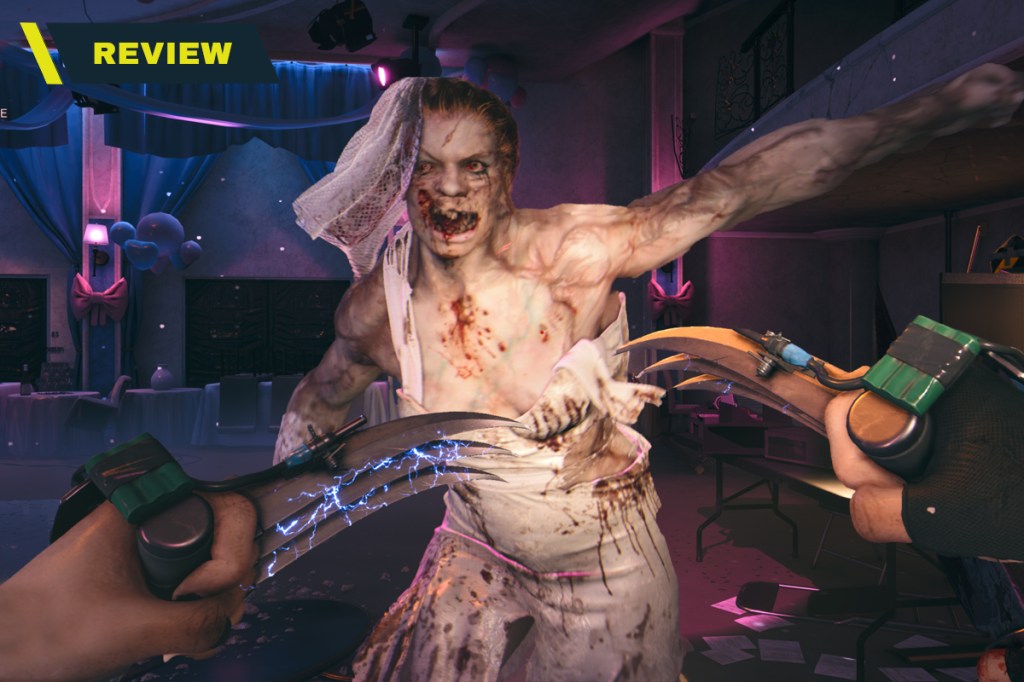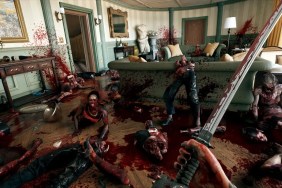Dambuster Studios was formed to finish Homefront: The Revolution, a terrible and buggy shooter that undershot the low bar set by its aggressively mediocre predecessor, after financial woes forced Crytek off the project. Dambuster has been tasked once again to pick up the pieces of another game with Dead Island 2, a title that infamously ran through multiple studios in the nine or so years since its announcement. Although instead of once again buckling under the weight of expectations and messy development cycles, Dambuster has created an appropriately scoped zombie-slaying RPG with silly, yet rewarding physics that highlight its impressive gore technology.
That gore tech, which is exhaustively referred to as the F.L.E.S.H. System, is not only the heart of Dead Island 2, it’s also its stomach, intestines, bones, liver, and whatever other tissues and fleshy bits humans are made out of. Packed under a decaying layer of skin, each zombie has its own assortment of muscles, organs, and bones that players can maim and slice accordingly. They’re rotting piñatas compelled to feed on brains and just begging to be split open.
This intricately detailed system serves two main functions that both enhance Dead island 2 in their own ways. Carving zombies open is always dynamic since every layer breaks and tears differently according to how it was attacked. Blunt tools are more likely to break bones and sharper weapons are built to slice off entire limbs. Fire chars each layer, while acid slowly burns them all away.

Seeing a zombie waddle forward slowly as an eyeball dangles out of its caved-in head like a paddle ball or turn to pulp after multiple blows is a disgusting thrill, but it’s exponentially more impressive because of how different it is each time. Since damage is localized to exactly where the zombie was struck, no two of them look the same because it’s not likely players will bludgeon the same exact area at the same exact angle with the same exact weapon. The variability of the battle damage keeps encounters from feeling canned and adds life to each of these dead sacks of goop. The gore is so over-the-top and that gratuity is a visual spectacle in and of itself, and the dynamic nature of it plays a big role in why it is so endlessly entertaining.
The visual appearance of the violence is important since Dead Island 2 is mostly about bashing the undead with all sorts of weapons — fighting off zombies can’t afford to get stale — but it also has a gameplay purpose that rounds out the feature. Zombies can be disabled depending on what is struck, so aiming for specific limbs is encouraged. Amputating a Runner’s legs off or breaking a Crusher’s arm means they can’t do their class’ special attacks, which can even the playing field. It’s not like Dead Space where it’s central to the experience and the game usually isn’t hard enough to require pinpoint accuracy, but its existence in some capacity makes it more than a cosmetic way to ogle at cartoonish brutality.
The physics and sandbox also play their part in highlighting and augmenting the F.L.E.S.H. System. Zombies react in an exaggerated manner to being struck and recoil realistically; their accessories even fly off in a spectacular fashion when they get bludgeoned or drop-kicked off their rotting feet. Combined with the appropriately thunderous sound effects, every swing has a satisfying impact that makes combat feel hefty. The dismemberment is still the star here, but its successes are at least partially held up by other smaller systems.

It also helps that the melee combat is fundamentally sound from a mechanical level. Dodging is responsive and can even be used to cancel attack animations, which adds even more agility to the game and dials up the pacing. And while normal slashes are the most common way to go on the offensive, charging attacks, performing drop kicks, and throwing weapons offer other means to attack and all offer something different to justify their existence. Zombies also have a stamina bar and exploiting that to get special executions adds another small yet welcome layer of strategy. Again, the F.L.E.S.H. System and physics do wonders for combat and that can’t be understated, but the variety and fluidity of its core systems are also important.
Although slashing and bashing are the primary ways to slay the undead, Dead Island 2‘s version of Los Angeles is littered with other opportunities to get more creative. These instances revolve around poison, water, electricity, and fire, and Dambuster has creatively layered the world in ways that organically bring out these elements. Leaky fuel lines spray flames, hanging power lines make it easier to zap zombies, car batteries make for makeshift electrical grenades, and portable jerry cans filled with all sorts of liquids are just some of the ways that players can create moments of planned and emergent destruction.
Luring zombies into a pool and then toasting them with a spare car battery is efficient and satisfying to think up, but it’s also rewarding to have these sorts of moments happen spontaneously. Certain zombies and weapons are also imbued with those same elements and the way in which they all bounce off each can lead to a domino effect of destruction. Dying from an unplanned explosion from a fire-engulfed zombie can occasionally be frustrating, but the unexpected wild card all of the elements have when put together is more than worth it because of how they liven up the combat.

Its RPG parts aren’t as uniformly solid, though. Players can customize their hero with an assortment of different cards, but many of them aren’t that useful or are just a bit situational, which neuters the desire to unequip the few good ones and try out new styles. The leveling system as a whole is also questionable since most zombies level with the player, so it’s only there to yield a fleeting sense of growth. It’s hard to feel that much stronger when everything in the world is also beefing up at the same rate.
The rewards are the most disappointing part since they’re rarely worth it. Dead Island 2 has many side missions, secret chests, and locked doors that are enticing, but ultimately deflating when they often reveal mundane weapons that often aren’t different enough from the ones that randomly spray out of zombies. Thankfully, it doesn’t have a laborious gear system to keep track of, but stumbling across a secret cache or finishing a lengthy optional task only to get another typical sword makes exploring or going off the beaten path not as rewarding. However, its objective marker-free weapon quests are incredible because they force players to pay attention to context clues and think critically about the map. These weapons are usually unique enough to make for decent rewards and the scavenger hunts needed to find them are thoughtfully designed.
The disappointing rewards are made a little worse because of how the optional quests are laid out. Levels are full of different safes that contain specific keys that special zombies hold. But a lot of these distinguished corpses don’t even spawn in until sometime later, so aimlessly searching for them is usually a fool’s errand that grows even more foolish when the reward is an average mace. Other types of side missions also gradually populate the world, and this approach slows the game down. It gives players reasons to revisit past areas, but it’s tedious to backtrack and complete a mission only to get another mission in that same area shortly after. Allowing players to discover side quests in a more open fashion would be more productive and encourage more exploration since tying them to story progression means there’s not much of a reason to venture out until later on.
While misguided, it is a more digestible take on mission structure, and this compartmentalization benefits the world design far more. Instead of taking place in an open world, Dead Island 2 is broken up into 10 zones separated by loading screens. Dividing the world into hubs allows each to be more dense and cuts down on a lot of the fluff that most open-world games have. Aside from the two superfluous underground areas and its underwhelming rendition of Hollywood Boulevard (which is also half underground), these iconic places are filled with all sorts of interwoven pathways and multiple explorable buildings that often take some problem solving to crack into. Stretching these zones across an open world likely would have led to a bigger, but more forgettable space, so this decision is as refreshing as it is smart.

Los Angeles itself is an easy target to skewer, but Dead Island 2 doesn’t just go for the easy Grand Theft Auto-style parody and is better for it. It is filled with loud, larger-than-life characters, yet also gives many of them more of a personality so they aren’t just one-note caricatures. The ones that aren’t as fleshed out make up for it with pure humor since the writing is almost universally great with plenty of well-timed, perfectly executed jokes that highlight the lighthearted tone that its gameplay evokes. The protagonist, while they lack a more personal link to the plot, also has their own array of solid quips and an optimistic attitude that further enhance the game’s tone. These goofy moments contrast heavily with the few story beats that try too hard to be serious, which end up dragging down the ending with an unearned and anticlimactic finale that gets away from the charm present in the rest of the game.
It’s not only a miracle that Dead Island 2 came out, but it’s also miraculous that it’s actually a great game. The procedural gore system is a true visual feat that it rightfully brags about by skewering zombies in its loading screens and forcing players to pay attention to every bloody detail as it boots. Its taut design also means there’s almost no fat weighing it all down, as evidenced by its restrained but dense environments. Although straightforward, it’s designed well and has enough of its own style to earn its place somewhere in the zombie game pantheon, which is impressive for a title that took almost a decade to shamble across the finish line.
SCORE: 8/10
As ComingSoon’s review policy explains, a score of 8 equates to “Great.” While there are a few minor issues, this score means that the art succeeds at its goal and leaves a memorable impact.
Disclosure: The publisher provided a PlayStation 4 and PlayStation 5 copy for our Dead Island 2 review. Reviewed on version 1.02 and 1.000.002, respectively.











